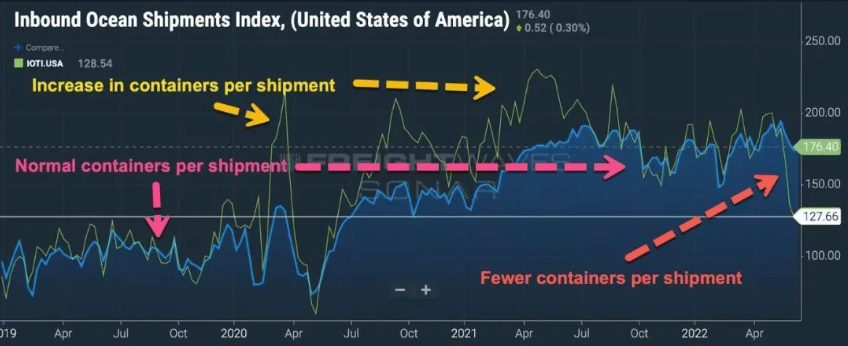Freight demand is slowing and freight rates will continue to fall in the near future

Freightwaves, a website for freight intelligence and data analysis, says supply chains are experiencing the bullwhip effect of the covid-19 economy and have built up large inventories. A slowdown in consumer spending due to inflation and a potential recession would have a big impact on freight demand and extend the run-down in inventories.
Inflation, rising interest rates and economic uncertainty are undermining consumer confidence. For the supply chain, the fall in consumer demand comes at a bad time. The bullwhip effect has led to massive inventory backlogs and severe disruption to global supply chains.
The“Bullwhip effect” is a supply chain term for a temporary surge in retail demand amplified by upstream manufacturers and suppliers who are rapidly increasing output far beyond what consumers can support. Eventually, retailers find themselves overstocked, and what started as a shortage eventually turns into a glut.

The chart shows an import index based on the number of bills of lading (Blue) and the corresponding number of containers in marked boxes (green) . These two indices show how the ratio of containers to shipments has evolved during the epidemic.
Before covid-19, the container ratio per shipment was fairly stable, with the two indices moving in sync. Starting in 2020, the container-to-cargo ratio exploded as large retailers added more containers to their scheduled shipments.
This continued into the fourth quarter of the 2021, when large retailers returned to their previous rates, perhaps because they thought they had enough inventory on hand to meet demand. At that point, if consumer demand remains stable, the bullwhip effect will wear off, as retailers will run down more inventory over time.
But on February 24,2022, the world changed, and the Russo-ukrainian conflict led to higher energy and food prices, triggering high inflation.
As inflation continued to accelerate into the spring, consumers cut back on spending. Retailers found that their inventory levels were higher than previously forecast and reported this in their earnings reports.
Large retailers reduced the number of containers per shipment following first-quarter 2022 results and subsequent announcements of excess inventory and weakening consumer confidence.
The industries that account for 77 per cent of us container imports are those that report overstocking-retail, electronics, furniture, clothing and appliances-and FreightWaves expects continued weakness until inventories return to normal levels.
Walmart was the first big retailer to report overstocking, target the second. The two large retailers are also the largest importers of container freight into the United States. They 2021 nearly 1.7 m teus, or nearly 7% of US container imports.
Last week, Nikkei Asia reported that Samsung was facing the bullwhip effect of having too much of its own inventory and asked its upstream suppliers to halve production in July.
2021, Samsung is the seventh largest importer in the US. Samsung imported 79,000 teus last month, according to SONAR Container Atlas.
On May 20, Container ratios began to diverge again, this time falling below their pre-covid-19 norm, according to data from SONAR Container Atlas. Since then, freight volumes have fallen by 8% (green) and container bookings by 36% (orange) .




Leave A Comment